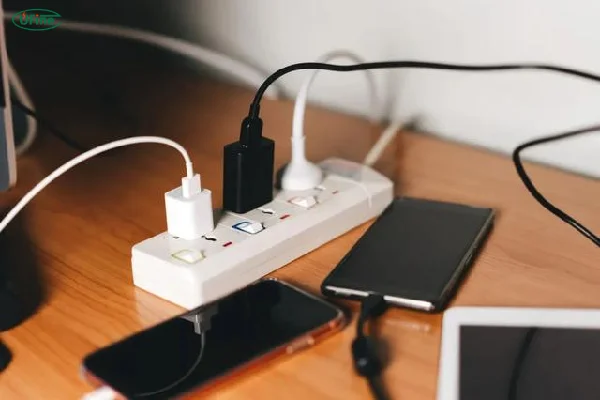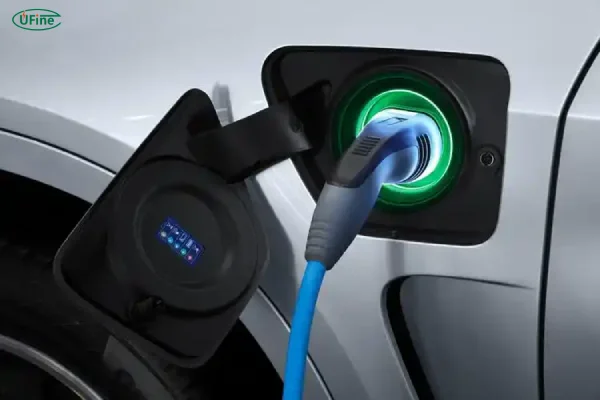Part 1. What is soft battery charge?
Have you ever wondered how to extend the life of your batteries while ensuring they perform optimally? Well, the secret might lie in soft battery charge. In essence, soft charging is a gentle approach to recharging batteries, where the current supplied to the battery is low and gradual. Unlike fast charging, which forces a large amount of current into the battery in a short period of time, soft charging is designed to protect the battery from unnecessary wear and tear. It’s not about speed—it’s about preserving the longevity and performance of your battery over time.
In a soft charging process, the battery receives a slow and controlled charge, reducing the likelihood of overheating, which is often a byproduct of rapid charging. Batteries, especially those used in devices like smartphones, laptops, and even electric vehicles, degrade faster when they’re subjected to high temperatures. Soft charging avoids this, ensuring the battery remains cool and functions properly for a longer period.
Part 2. Advantages of soft battery charge
Now, you might be wondering: “Why should I opt for soft charging if it takes longer?” It’s a valid question, and the answer lies in the long-term benefits that soft charging brings to the table. Let’s dive deeper into the advantages:
a. Prolonged Battery Life
The most compelling reason to choose soft charging is its ability to extend the life of your battery. By charging slowly and steadily, the battery experiences less internal stress, which helps preserve its chemical stability. Fast charging can significantly reduce the lifespan of a battery by overworking its components, but soft charging ensures that the battery remains in top condition for many more cycles.
b. Reduced Heat Generation
Batteries are highly sensitive to heat. When subjected to excessive heat, their internal components can start to degrade, which leads to reduced capacity and potential failure. Soft charging is the cooler option, literally. Since it uses a slower charging method, it generates far less heat compared to fast charging. This not only protects the battery but also minimizes the risk of safety hazards, such as swelling or leakage.
c. Improved Safety
Fast charging can sometimes lead to issues such as overcharging or overheating, which could pose a safety threat. In contrast, soft charging uses a more controlled method, ensuring that the battery isn’t subjected to conditions that could cause it to fail or even catch fire. For those who prioritize safety—whether in personal gadgets or more complex systems—soft charging is a more reliable choice.
d. Energy Efficiency
While fast charging may seem more efficient in the short term, it often leads to energy losses due to heat dissipation and the high charging currents involved. Soft charging, on the other hand, ensures that energy is delivered steadily with minimal waste, which contributes to a more sustainable use of energy over time.
e. Less Wear and Tear on Battery Cells
When a battery is charged quickly, the chemical reactions inside it can occur too rapidly, leading to increased wear on the battery cells. Soft charging, by maintaining a lower current, allows the reactions to occur in a more stable and controlled manner, preserving the integrity of the battery’s internal structure.
Part 3. Disadvantages of soft battery charge
While soft charging offers numerous benefits, it’s important to acknowledge that it also has some drawbacks. These limitations are essential to consider, especially when deciding whether soft charging is the right approach for your specific needs.
a. Longer Charging Times
Without a doubt, the most significant downside of soft charging is that it takes more time. A fast charger can power up a device or vehicle much quicker than a soft charger, which can be a disadvantage when you’re in a hurry. If you’re someone who needs a quick energy boost, waiting hours for a full charge may not be ideal.
b. Not Suitable for All Situations
Soft charging is not always the best choice for every situation. For instance, in an emergency where you need a quick charge to get through a day, relying on slow charging might be impractical. Fast charging is designed precisely for these kinds of urgent needs.
c. Requires Specialized Equipment
In many cases, you can’t use a regular charger for soft charging. You need a charger specifically designed to deliver a lower and controlled current. These chargers might not be as readily available or as easy to use, which could limit their practicality in certain scenarios.
Part 4. How to soft battery charge?
You may now be asking: “How can I implement soft battery charging?” The process is relatively straightforward, but it does require the right tools and a bit of patience. Let’s walk through the steps:
-
Check Battery Compatibility: Before you begin, ensure that your battery is compatible with soft charging. Modern rechargeable batteries, such as lithium-ion and nickel-metal hydride (NiMH), can usually benefit from soft charging techniques.
-
Select the Right Charger: Invest in a charger that allows you to control the charging rate. Some chargers come with charge-rate adjustments, while others have built-in mechanisms that automatically reduce the charging speed as the battery nears full capacity.
-
Avoid Overcharging: While soft charging is gentle, overcharging still remains a risk. Ensure that your charger has overcharge protection to avoid damaging the battery.
-
Monitor the Charging Process: Even though soft charging is safer, it’s still essential to monitor the temperature of your battery during charging. If it gets unusually hot, discontinue charging and let the battery cool down before continuing.
Part 5. Soft charging vs. fast charging
One of the most common comparisons when discussing battery charging methods is soft charging versus fast charging. The key differences come down to speed, efficiency, and battery longevity:
a. Speed
Fast charging delivers a lot of energy in a short amount of time, making it the ideal solution when you’re in a rush. However, soft charging is much slower, offering a more gradual energy transfer that’s better for long-term battery health.
b. Efficiency and Heat
Fast charging generates a significant amount of heat, which can damage the battery over time. Soft charging, on the other hand, ensures that your battery stays cooler, which reduces wear and helps the battery last longer.
c. Longevity
As we mentioned earlier, fast charging can reduce the lifespan of a battery due to the strain it places on the internal cells. Soft charging is far gentler, helping to extend the battery’s cycle life and keep it running smoothly for years.
d. Suitability
Fast charging is often needed when you’re on the go and need a quick recharge. Soft charging, however, is the ideal choice when you’re not in a rush and want to preserve your battery for long-term use.
Fast Charging vs Slow Charging: Which is Better for your Lithium Battery?
Part 6. Charger
To achieve soft charging, you need to use a charger that is specifically designed to handle it. These chargers can regulate the charging rate to ensure that the battery receives a steady, moderate flow of electricity. Here’s what to look for in a soft battery charge charger:
- Current Regulation: Soft chargers maintain a low charging current that is gentle on the battery.
- Temperature Control: Many soft chargers come with temperature sensors that monitor the battery’s temperature during the charging process. This ensures the battery doesn’t overheat.
- Overcharge Protection: Look for a charger that automatically stops charging once the battery reaches full capacity.
Part 7. Application
Soft charging isn’t just for your everyday gadgets—it’s a critical part of many industries and systems where battery health is essential.
a. Electric Vehicles (EVs)
EVs rely heavily on their batteries, and soft charging helps extend the battery life over the years. Many EV owners charge their cars overnight, allowing the battery to charge slowly without risk.
b. Renewable Energy Systems
In solar or wind power storage systems, soft charging is crucial for maintaining battery integrity. These systems often store power over extended periods, making soft charging the ideal method for charging the large batteries used in these setups.
c. Portable Devices
Smartphones, tablets, and laptops benefit from soft charging because it helps preserve their batteries for longer periods, allowing for more charge cycles before the battery capacity starts to degrade.
Part 8. Final words
While fast charging might offer quick convenience, soft battery charging offers undeniable advantages for anyone looking to extend their battery’s lifespan and preserve its efficiency over time. It’s all about finding the right balance between convenience and long-term health. Whether you’re charging your smartphone, electric vehicle, or renewable energy storage system, soft charging helps your batteries live longer, work better, and stay safer. With the right charger and a little patience, you can embrace the slower, safer path to a fully charged battery.
Related Tags:
More Articles

How to Choose the Best Floor Scrubber Battery for Commercial Cleaning?
Selecting the ideal floor scrubber battery ensures a long runtime, rapid charging, and minimal maintenance for efficient commercial cleaning operations.
Battery for Blower vs Battery for Leaf Vacuum: Which One Should You Choose?
Battery for blower vs leaf vacuum—learn the key differences in power, fit, and runtime to choose the right battery for your outdoor tool needs.
How to Choose the Right Battery for Blower?
Choosing the right blower battery? Consider voltage, capacity, chemistry & usage. This guide helps match the best battery for peak performance.
How to Choose the Best Insulated Battery Box for Lithium Batteries?
Choosing the Best Insulated Battery Box for Lithium Batteries? Discover key factors such as size, material, and safety for optimal protection and performance.
7 Critical Elements on a Lithium Battery Shipping Label
What must be on a lithium battery shipping label? Learn 7 key elements to ensure safety, legal compliance, and correct handling across all transport modes.





